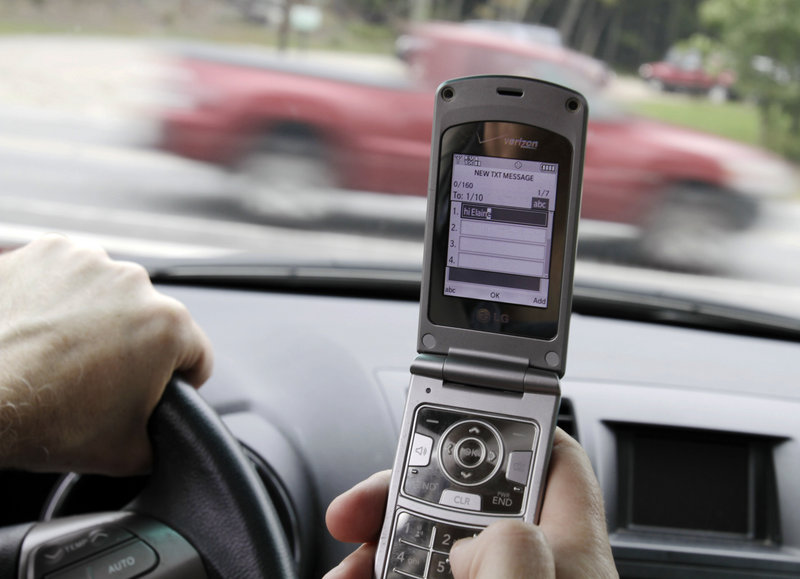Two and a half years into the crusade against distracted driving, automakers are equipping vehicles with new technology that might circumvent the 34 state laws that prohibit text messaging behind the wheel, which 95 percent of Americans say is dangerous.
The manufacturers say the new hands-free text-messaging systems will reduce the risk of distraction. Safety advocates aren’t so sure. And experts say it will require careful analysis to determine whether laws that ban drivers from sending and receiving text messages will apply to hands-free methods.
Vehicles are being transformed into mobile communications centers, with cellphones, DVD players, access to Facebook and Twitter, Global Positioning System devices and satellite radio.
“Unfortunately, drivers are being encouraged to do everything but drive,” said Jonathan Adkins, spokesman for the Governors Highway Safety Association. “It’s a sign of the pressures of modern-day life to do 10 things at once. However, driving is a complex task, and our message continues to be that a singular focus is needed.”
The latest wrinkle is an advancement in Ford’s voice-activated Sync system, which is standard in most of the company’s 2012 models. Now, using a Bluetooth wireless connection with a cellphone, the vehicles can read text messages aloud. The driver can tap a touch screen to send one of 15 preset responses, including “I’m running a few minutes late,” “I can’t talk right now” and “I’m on my way.” BMW offers a similar system. Vehicles with General Motors’ OnStar will read text messages and Facebook statuses to the user and transcribe spoken messages into text or Facebook messages.
The demand for all this comes, in part, because the amount of time Americans spend stuck in traffic has more than doubled since 1982, to an average of 34 hours a year. The Texas Transportation Institute determined that drivers in the Washington area have it worst, with an average of 74 hours lost each year.
Wade Newton of the Alliance of Automobile Manufacturers says carmakers are trying to respond with the safest possible technology.
“When a motorist is driving down the road and a cellphone rings and they answer it, they’re giving us a message that that’s important to them,” Newton said.
Many automakers have integrated buttons that once were on the dashboard, radio and cruise controls, for example, into the steering wheel in hopes of keeping drivers’ hands there.
“What a text message is and what’s hands-free is always subject to debate,” Newton said. “They’re tough questions, and that’s why I think you’re seeing automakers move to this integrated system that helps a driver do this safely.”
When states began banning text messaging, it didn’t seem to need a great deal of definition; it was using a handheld device to tap out a message and to read messages from others. Now states will have to scrutinize their legal language to decide whether hands-free systems elude their definition and intent.
“This is another example of technology changing faster than laws can keep up,” Adkins said. “Just a few years ago, texting wasn’t even an option. Now we have this new option for voice activation. To date, there has been no independent research indicating a safety benefit to this technology, and until that benefit is demonstrated, we won’t be able to support it.”
Sending or receiving text messages on a handheld device is illegal in some states. But hands-free text messaging?
“If it were to be interpreted as illegal, enforcement would be nearly impossible,” Adkins said. “How could we say that it’s OK to use your phone hands-free but not text hands-free?”
U.S. Transportation Secretary Ray LaHood, who has been an unrelenting spearhead of the distracted-driving crusade, is unambiguous about his goal. He doesn’t support any form of texting or phone conversation while driving. He urges people to put their phones in the glove compartment.
The National Highway Traffic Safety Administration said 5,474 people were killed and 448,000 were hurt in 2009 in accidents that involved distracted driving.
Send questions/comments to the editors.



Success. Please wait for the page to reload. If the page does not reload within 5 seconds, please refresh the page.
Enter your email and password to access comments.
Hi, to comment on stories you must . This profile is in addition to your subscription and website login.
Already have a commenting profile? .
Invalid username/password.
Please check your email to confirm and complete your registration.
Only subscribers are eligible to post comments. Please subscribe or login first for digital access. Here’s why.
Use the form below to reset your password. When you've submitted your account email, we will send an email with a reset code.